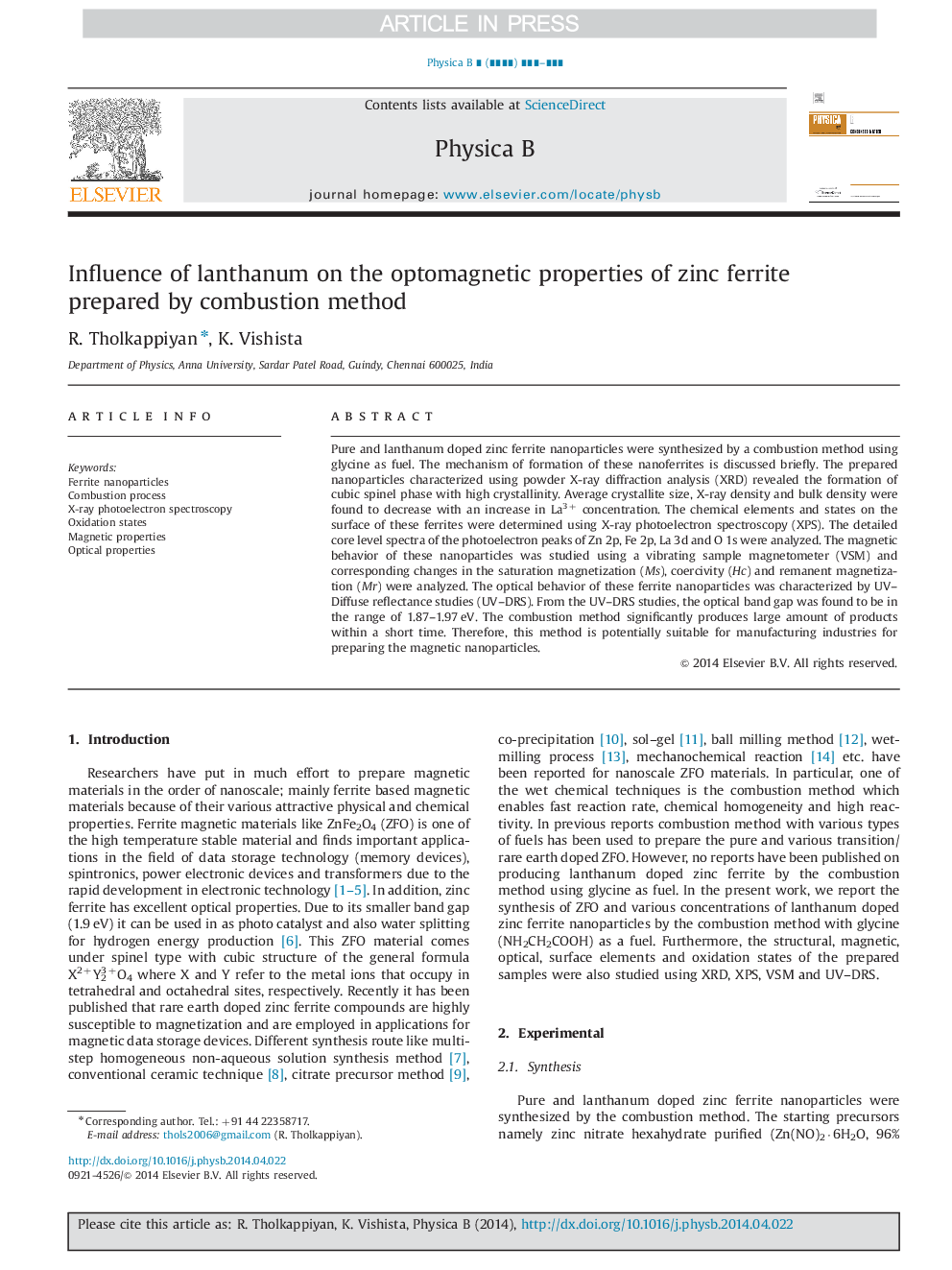| Article ID | Journal | Published Year | Pages | File Type |
|---|---|---|---|---|
| 8162724 | Physica B: Condensed Matter | 2014 | 7 Pages |
Abstract
Pure and lanthanum doped zinc ferrite nanoparticles were synthesized by a combustion method using glycine as fuel. The mechanism of formation of these nanoferrites is discussed briefly. The prepared nanoparticles characterized using powder X-ray diffraction analysis (XRD) revealed the formation of cubic spinel phase with high crystallinity. Average crystallite size, X-ray density and bulk density were found to decrease with an increase in La3+ concentration. The chemical elements and states on the surface of these ferrites were determined using X-ray photoelectron spectroscopy (XPS). The detailed core level spectra of the photoelectron peaks of Zn 2p, Fe 2p, La 3d and O 1s were analyzed. The magnetic behavior of these nanoparticles was studied using a vibrating sample magnetometer (VSM) and corresponding changes in the saturation magnetization (Ms), coercivity (Hc) and remanent magnetization (Mr) were analyzed. The optical behavior of these ferrite nanoparticles was characterized by UV-Diffuse reflectance studies (UV-DRS). From the UV-DRS studies, the optical band gap was found to be in the range of 1.87-1.97Â eV. The combustion method significantly produces large amount of products within a short time. Therefore, this method is potentially suitable for manufacturing industries for preparing the magnetic nanoparticles.
Keywords
Related Topics
Physical Sciences and Engineering
Physics and Astronomy
Condensed Matter Physics
Authors
R. Tholkappiyan, K. Vishista,
